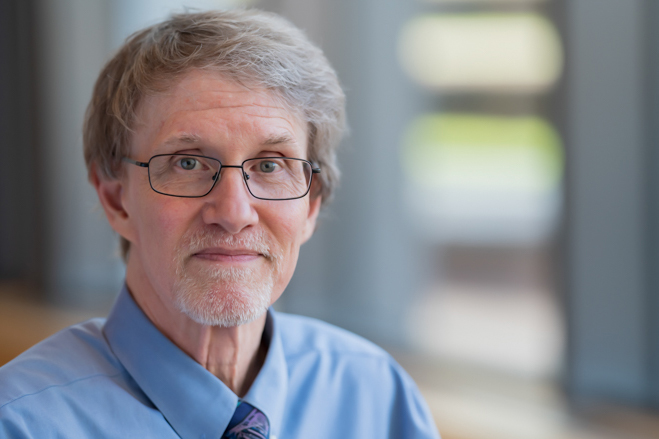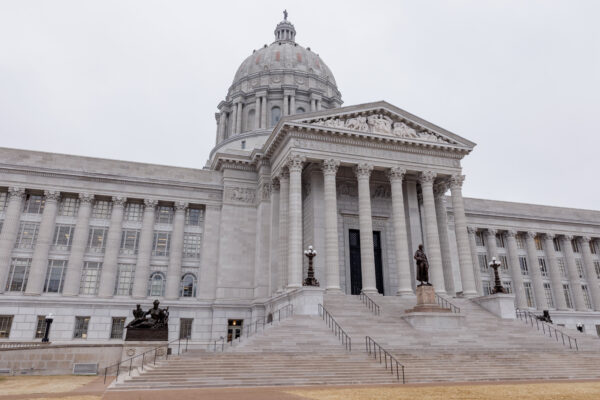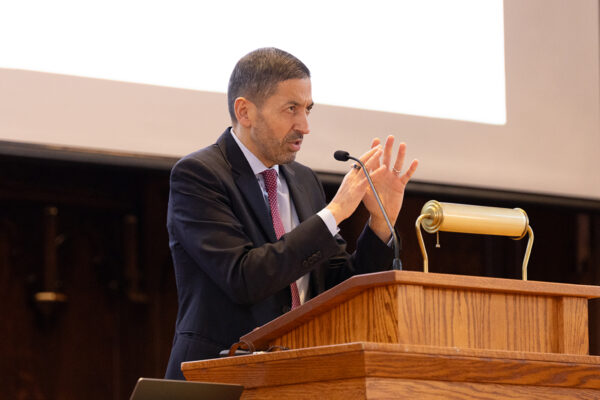Research-informed policy saves lives, as demonstrated through tobacco laws, seatbelt use, cancer screenings, vaccine uptake and many other public health advances. But turning evidence into impact takes more than good data — it requires strategic engagement with policymakers.

In today’s landscape of fractured public trust and rampant disinformation, university researchers are uniquely positioned to guide policy decisions. Experts say their influence is not only possible but essential. To make an impact, researchers must pair strong science with targeted communication, real-world storytelling and a clear understanding of the political environment. Sometimes, it also takes lucky timing.
Ross C. Brownson, the Steven H. and Susan U. Lipstein Distinguished Professor at the School of Public Health at Washington University in St. Louis and a former state health official, has spent decades seeking to bridge the gap between research, practice and policy.
Here, he offers several strategies for researchers who want to amplify the policy impact of their work.
What’s the biggest mistake researchers make when trying to influence policy?
Too often, researchers assume that publishing an academic paper is enough to change practice and policy. But most policymakers aren’t reading journals. Instead, they rely heavily on other sources, including summaries of evidence or conversations with experts. It is often important to collaborate with groups that are experts in reaching policymakers, including organizations representing your profession.
How can researchers get started?
Researchers can take several steps to begin translating their research into policy action. First, it is important to identify priority issues and how research can inform these topics. Second, understanding the policy landscape — including the process and key decision-makers — is critical. Third, researchers should build relationships to foster research-driven policy — these may include legislative staffers or advocacy groups. Finally, researchers can make their research more policy-friendly by writing policy briefs or preparing talking points.
What communication strategies work best with elected officials?
Think like a policymaker. Unlike researchers who often focus deeply on a narrow range of issues, elected officials juggle hundreds or thousands of issues across various topics. Their attention is shaped by electoral cycles, constituent needs, budgets and ideology. Frame your message around what matters most to them — whether it’s return on investment, public opinion, social good or increased odds of being re-elected. Don’t overlook legislative staff — they often have deeper issue knowledge and more availability than elected officials. Also, practice the ‘3-30-3 rule’: have a three-second headline or hook, a 30-second elevator pitch, and a three-minute explanation ready to adapt your message based on the opportunity and time available.
How can researchers cut through political noise and get their messages heard?
Simplify without oversimplifying. One effective principle is: no data without stories, no stories without data. A clear, concise message paired with a local, human-centered story can be far more persuasive than charts or citations alone. To move your message from abstract to actionable, answer the key questions: What’s the problem? Why does it matter? What can be done about the problem? What’s the cost and benefit of action or inaction? Use multiple communication channels — social media, legislative testimony, in-person meetings and infographics — to increase the likelihood that your message will get through.
How can researchers build trust in such a politically charged environment?
Policymakers trust local voices. Universities in their districts are often viewed as credible sources of information. Partnering with community organizations, public health coalitions or extension services can build trust and leverage existing relationships. Policy windows and the need for information can open and close quickly — sometimes within 24 hours. That means being prepared with ready-to-go, tailored materials so you are viewed as a reliable resource.
How can researchers learn more about this?
The Prevention Research Center and the Center for Advancing Health Services, Policy & Economics Research at WashU offer training and resources to bridge research and policymaking. The Center for Health & Science Communication on the Medical Campus provides many tools on its website. And WashU’s Office of Government & Community Relations offers guidance for engaging with policymakers.


